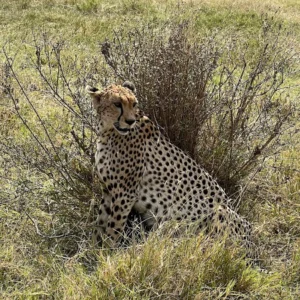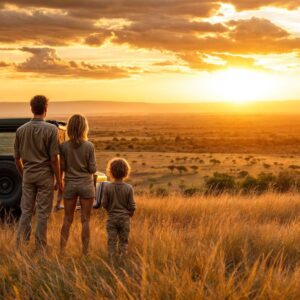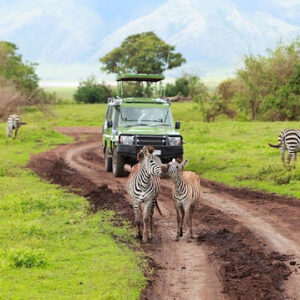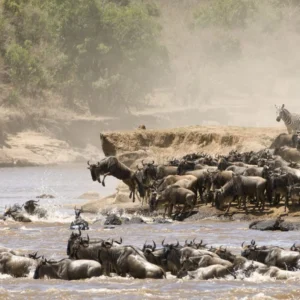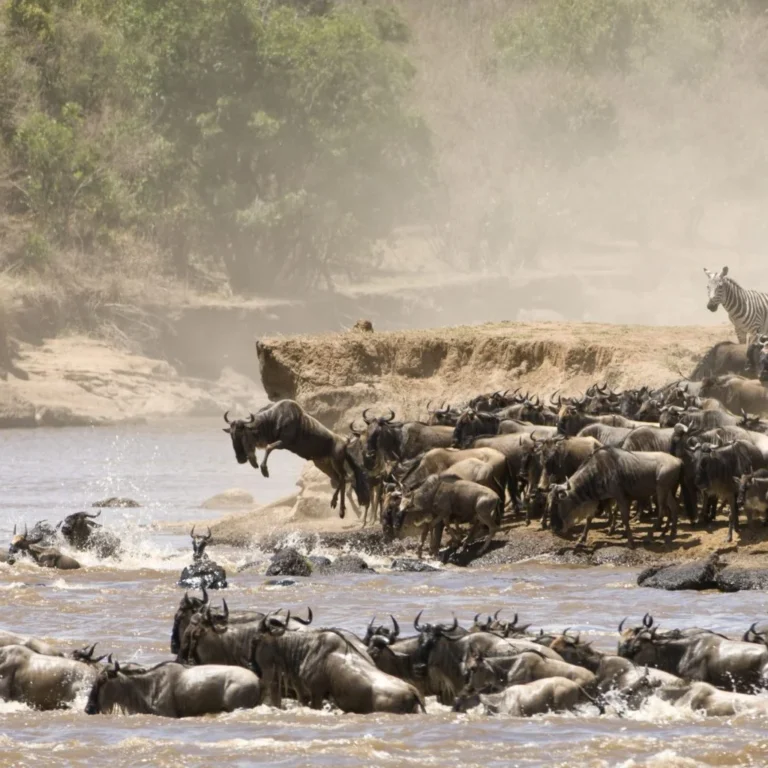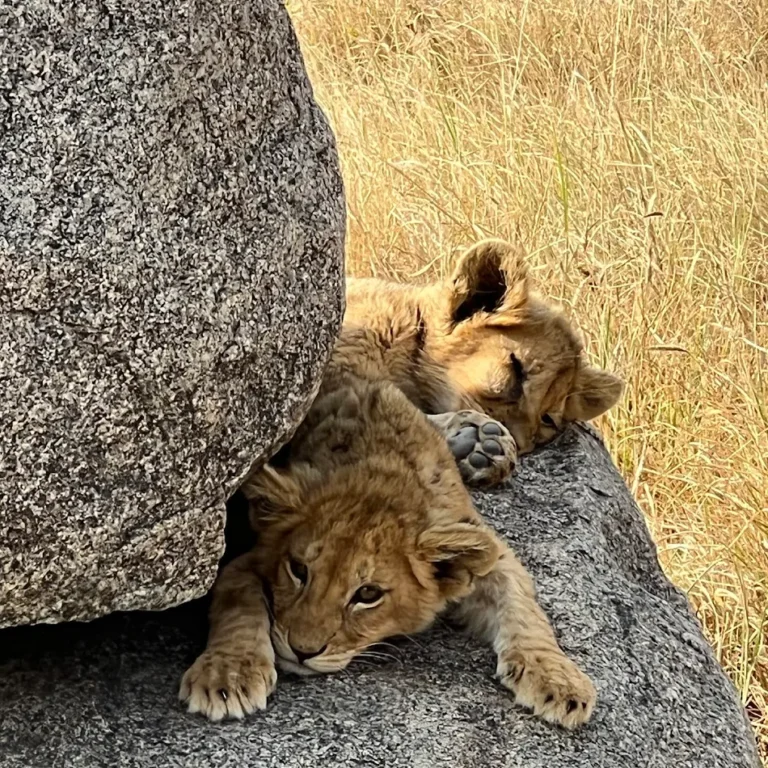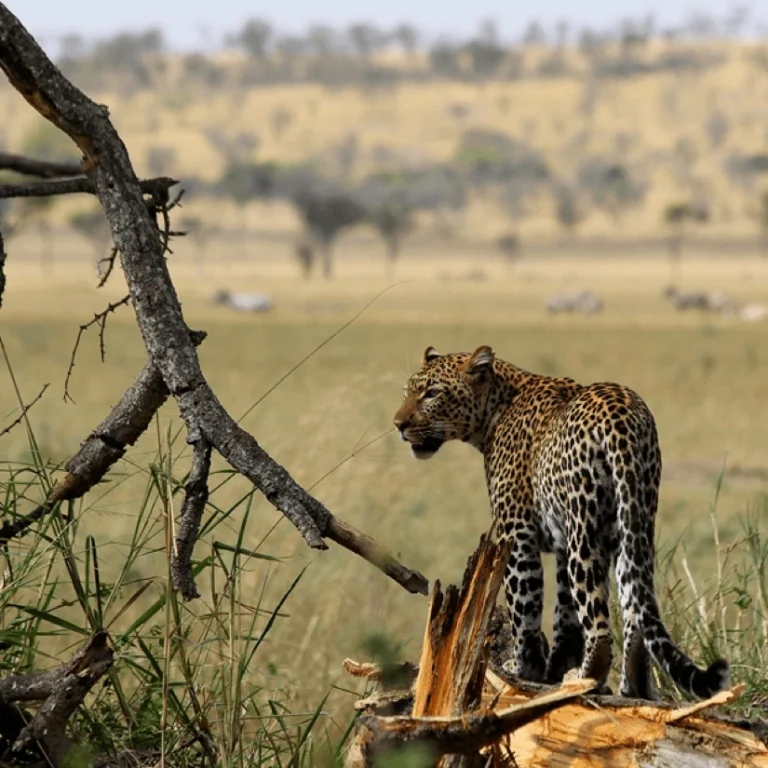A typical day on Kilimanjaro involves a mix of hiking, resting, and enjoying the stunning scenery. It begins with an early wake-up call, followed by a hearty breakfast and a health check. After packing, hikers set off at a slow, steady pace, taking breaks every hour to hydrate, snack, and appreciate the views. Lunch is either a picnic on the trail or a hot meal at the campsite, depending on the day’s schedule. Afternoons are for relaxing, acclimatizing, and sometimes short acclimatization hikes. Evenings conclude with dinner, a briefing from the guide, and an early bedtime to prepare for the next day’s adventure.
Mount Kilimanjaro. Its majestic silhouette beckons adventurers from across the globe, promising not just a summit but an extraordinary journey. Climbing Africa’s highest peak is a multi-day expedition that demands physical endurance and mental fortitude. But what does a “typical” day on this iconic mountain truly entail? Far from being a simple hike, each day on Kilimanjaro unfolds with a carefully orchestrated rhythm, designed to maximize acclimatization, ensure safety, and prepare you for the ultimate goal: the summit. Here’s a look at what to expect as you navigate the ever-changing landscapes and altitudes of Kilimanjaro.
1. Preparing For the Day on Kilimanjaro: “Jambo Bwana, Chai!”
The Kilimanjaro day begins early, often between 6:00 AM and 7:00 AM, depending on the route and the day’s trekking demands. You’ll be gently woken by a friendly porter, usually with the cheerful Swahili greeting “Jambo Bwana, chai!” (Hello, sir/madam, tea!). A steaming mug of hot tea or coffee, sometimes accompanied by biscuits, is delivered directly to your tent. This warm wake-up is a cherished ritual, providing warmth and a moment to gather your thoughts as the mountain awakens around you.
While you sip your tea, your personal porter will bring you a basin of warm water for a quick wash. Its your chance to freshen up before preparing for the day’s trek. Pack your daypack with essentials: water, snacks, extra layers, rain gear, camera, and anything you might need readily accessible. Your duffel bag, containing your main luggage, will be collected by the porters to be carried to the next camp.
2. Hiking to the Next Campsite: Pole Pole’s Mantra
After a hearty breakfast in the mess tent (typically porridge, eggs, toast, fruit, and more hot drinks), you’ll gather with your guides and fellow climbers. This is when the day’s trek truly begins. The mantra of Kilimanjaro is “Pole Pole” – Swahili for “slowly, slowly.” This isn’t just a suggestion; it’s a critical strategy for Mount Kilimanjaro Climbing experience acclimatization.
The morning hike usually lasts 3-5 hours, depending on the route and the distance to the next camp. You’ll move at a deliberate, measured pace, conserving energy and allowing your body to adapt to the increasing altitude. The landscapes change dramatically with each day: from lush rainforest on the lower slopes, through heather and moorland, to the alpine desert higher up. Your guides will set a comfortable pace, offering insights into the flora, fauna, and geology of the mountain.
3. Lunch Break: A Recharge in the Wild
Around midday, after several hours of trekking, your guide will select a scenic and sheltered spot for a well-deserved lunch break during your Kilimanjaro Hike Daily Schedule. In most cases, the support team (cooks and some porters) will have already trekked ahead to set up a small mess tent or prepare a picnic. Lunch typically a hot meal, designed to refuel your body. This might include soup, bread, pasta, rice, or sandwiches, along with hot tea and coffee. It’s a chance to take off your boots, rest your weary feet, and enjoy the stunning views. Guides will encourage you to eat and drink plenty, as hydration and nutrition are vital for combating altitude sickness. This break usually lasts for about an hour.
4. Afternoon Hike: Pushing Onward and Upward
After lunch, the trek resumes for another 2-3 hours, a typical day on the Kilimanjaro trek. The afternoon hike often involves a gradual ascent, sometimes with steeper sections, as you make your way towards the next camp. The air thins noticeably each day, and you’ll become more acutely aware of your breathing. Despite the physical challenge, the beauty of the surroundings remains captivating. You might encounter unique high-altitude plants like giant groundsels or lobelias. The guides continue to monitor the group, ensuring everyone is moving at a safe pace and checking for any signs of altitude sickness. As you approach camp, you’ll often see your colorful tents already pitched, a welcome sight that signals the end of the day’s trekking.
5. Dinner and Evening Activities: Sustenance and Camaraderie
Upon arrival at camp (usually mid-afternoon), you’ll find your tents set up by the porters. A basin of warm water will be waiting outside your tent for a wash-up daily schedule on Kilimanjaro. This is your time to change into warmer clothes, perhaps organize your gear, and relax after the day’s exertions. Around 5:00 PM, tea and snacks are served in the mess tent – usually popcorn, biscuits, and hot drinks. It’s a social hour, where climbers share stories of the day, laugh, and bond over their shared experience. Dinner, served between 6:00 PM and 7:00 PM, is a substantial, multi-course meal prepared by your cook. Expect hearty soups, main courses with chicken, beef, or fish, rice, pasta, vegetables, and fruit.
6. Routine Health Checkups: Monitoring Your Acclimatization
Health checkups are integral to maintaining safety on the mountain during Kilimanjaro hiking tours. Your guides will monitor your pulse and oxygen levels each evening. This proactive measure helps catch altitude sickness early, ensuring everyone continues to progress safely. After dinner, your head guide will conduct individual health checkups. This is a crucial part of the daily routine on a typical day when climbing Kilimanjaro.
Pulse and Oxygen Saturation. Using a pulse oximeter, the guide will measure your pulse rate and blood oxygen saturation levels. These readings provide valuable insights into how well your body is acclimatizing.
Symptom Assessment. You’ll be asked about any symptoms you might be experiencing, such as headache, nausea, fatigue, dizziness, or difficulty sleeping. It’s vital to be completely honest about how you’re feeling, even if symptoms are mild. Early detection of altitude sickness symptoms allows guides to intervene, offer advice, or, in severe cases, recommend descent. This daily check-up is a testament to the operator’s commitment to your safety and Preparation for the Kilimanjaro climb.
7. Brief About the Next Day’s Typical Day on Kilimanjaro: Planning Ahead
Before bed, your guides will inform you about the next day’s schedule. They’ll discuss the distance to cover, the route, and any significant points of interest you might encounter. This briefing allows you to mentally prepare for the challenges ahead. Following the health check, the head guide will conduct a briefing about the next day’s trek.
- Route Overview. They’ll explain the day’s route, the estimated distance and elevation gain, and the expected terrain.
- Altitude Gain. You’ll be informed about the altitude of the next camp and any significant ascent profiles.
- Weather Forecast. Guides will provide a general weather forecast for the upcoming day.
- Special Considerations. They’ll highlight any specific challenges or points of interest for the next day, helping you mentally prepare. This briefing ensures everyone is informed and prepared for what lies ahead.
8. Preparing For the Next Day: Get Your Gear Ready
After the briefing, it’s time to prepare for the following day. This includes packing your gear and ensuring you’re hydrated and well-rested. You might find yourself reflecting on personal challenges and triumphs during the climb. After the briefing, it’s time to prepare your gear for the following day. This involves:
- Organizing Your Daypack. Ensure all essentials are in your daypack, including enough water (camelbacks should be filled), snacks, warm layers, waterproofs, and a headlamp best gear for climbing Mt Kilimanjaro.
- Packing Your Duffel Bag. Repack your main duffel bag with items you won’t need until the next camp. Your personal porter will collect this bag early in the morning.
- Charging Devices. If you have a power bank, this is the time to charge your phone or camera batteries.
- Personal Hygiene. A final quick wash and a last trip to the camp toilet.
Most climbers are in their tents and ready for sleep by 8:00 PM or 9:00 PM. The early starts and physical exertion ensure a quick descent into slumber, even with the sometimes-chilly temperatures and the thin air.
9. Typical Schedule for Summit Night: The Ultimate Challenge
As you approach the summit, a specific preparation routine kicks in. Generally, summit night starts around midnight, with a planned ascent to the peak in the early hours. You’ll layer up – it’s freezing at this elevation – and ensure your water and snacks are accessible for energy throughout the night. Summit night is a beast of its own, breaking from the typical daily routine.
Early Dinner. Dinner is served earlier than usual, around 5:00 PM or 6:00 PM.
Early Bedtime. Climbers try to get a few hours of sleep from around 7:00 PM to 11:00 PM. This “rest” is often restless due to anticipation, altitude, and cold.
Midnight Wake-up. You’ll be woken between 11:00 PM and midnight for a light snack and hot drinks.
The Ascent Begins. Around midnight, bundled in all your layers, headlamps illuminating the path, you begin the slow, arduous trek up the steep, scree slopes towards the crater rim. This is often the coldest and most mentally challenging part of the climb, pushing through the darkness and the thinning air.
Stella Point/Gilman’s Point. After 5-7 hours, you’ll reach either Stella Point or Gilman’s Point on the crater rim, just as dawn breaks, offering a breathtaking view.
To Uhuru Peak. From the rim, it’s usually another 1-2 hours of challenging but exhilarating trekking along the crater rim to Uhuru Peak, the true summit.
Summit and Descent. You’ll spend a short time at the summit for photos and celebration, then begin the long, fast descent back to a lower camp (often Barafu or Mweka Camp), typically arriving by mid-afternoon. This descent is tough on the knees but signals the overwhelming feeling of accomplishment. Our most popular favourite Kilimanjaro Climbing Packages.
10. A Day of Adventure and Perseverance on Kilimanjaro
A day on Kilimanjaro is a carefully balanced blend of physical exertion, mental resilience, and awe-inspiring natural beauty. It’s a testament to human endurance, supported by a dedicated team of guides and porters who work tirelessly to ensure your safety and success. Each morning brings new vistas, each step takes you higher, and each evening offers a chance to reflect on the incredible journey.
Kilimanjaro Hike Daily Schedule routes
Kilimanjaro hikes typically involve ascending the mountain over several days, with daily schedules centered around hiking, resting, and acclimatizing to the altitude. A typical day includes an early wake-up, hiking through diverse landscapes, lunch breaks, and reaching the campsite in the afternoon. After setting up camp, climbers have dinner and prepare for the next day. Routes like Machame, Northern Circuit, and Rongai have distinct daily schedules, with varying distances and terrain.
Typical Day on Kilimanjaro: FAQs
Climbing Mount Kilimanjaro, the highest peak in Africa standing at 5,895 meters, is a dream pursuit for many adventurers. However, the trek demands thorough preparation and understanding of what to expect each day. Here, we address common questions about a typical day on Kilimanjaro.
What Does a Typical Day Look Like?
A typical day on Kilimanjaro varies depending on the route you choose, but there are key elements common to all treks. Most days start early, often around 6:00 AM, with climbers enjoying breakfast before hitting the trail. Following breakfast, hikers pack their gear and are briefed by the guides about the day’s itinerary.
The hiking sessions generally last between 5 to 8 hours, with scheduled breaks for rest and meals. Lunch is often enjoyed at scenic viewpoints, allowing climbers to recharge before resuming their ascent. As dusk approaches, normally around 5:00 PM, hikers set up camp, where dinner is served, and evening discussions help climbers bond and share their experiences.
What Can I Expect in Terms of Altitude Change?
The Kilimanjaro trek is known for its drastic altitude changes, and that significantly affects daily routines. On average, climbers ascend approximately 1,000 meters (3,281 feet) every day to help acclimatize. Guides take this into consideration, balancing strenuous days with lighter ones to allow for proper adaptation to high altitudes.
What Are the Accommodation Facilities Like?
Camp facilities on Kilimanjaro are fairly basic but comfortable enough for trekkers. Shared tents accommodate climbers, and the crew sets these up each day. Typically, a mess tent serves as a dining area where meals are prepared and socializing occurs. It’s beneficial to note that trekkers should bring their own personal sleeping bags for added comfort.
How About Food and Water?
Nutrition plays a vital role in keeping energy levels high during your climb. On average, climbers can expect a mix of local and international cuisine, including dishes like pasta, rice, and stews, fueling them for the journey ahead. Guides ensure ample food is provided, with climbers consuming up to 4,000 calories a day.
Hydration is equally crucial. Trekkers are encouraged to drink at least three liters of water daily. Safe drinking water is provided, and guides will facilitate this by boiling water or providing purification tablets, ensuring that climbers can stay properly hydrated.
What Will the Weather Be Like?
Weather conditions on Kilimanjaro can be unpredictable, ranging from sunny mornings to sudden rain showers. Climbers should prepare for all weather conditions by packing layers of clothing that can be easily adjusted. Days in the lower altitudes may be warm, but temperatures drop significantly as elevation increases, particularly at night when it can get quite cold.
A day on Kilimanjaro is filled with adventure, challenge, and stunning vistas. Climbing this majestic mountain is not just a test of physical endurance, but also an immersive experience that connects trekkers with nature, culture, and their inner selves. Preparing adequately and knowing what to expect will enhance the journey and help you succeed in reaching the summit. Whether you’re a seasoned climber or a first-time trekker, Kilimanjaro is bound to leave you with unforgettable memories.
How many hours a day to climb Kilimanjaro? On most days of a Kilimanjaro climb, you can expect to hike for 5 to 8 hours. However, the summit day will be much longer, potentially lasting 12 to 16 hours. The total hours spent trekking will vary depending on the route, your pace, and acclimatization needs. On a typical Mount Kilimanjaro hiking route, climbers spend an average of 6-8 hours per day trekking, covering a distance of 6-9 miles (10-15 kilometers). The specific duration and distance vary depending on the chosen route and the day’s itinerary.
Are there campfires on Kilimanjaro? No, campfires are not allowed on Mount Kilimanjaro. This is due to the fragile ecosystem of the mountain and the potential for fires to spread out of control, especially with the strong winds. Instead of campfires, cooks use propane stoves for preparing meals.
What do you eat when climbing Kilimanjaro? When climbing Kilimanjaro, you can expect a mix of carbohydrate-rich, protein-packed, and vitamin-filled meals to fuel your trek. Typical meals include porridge or pancakes for breakfast, fresh fruit, and hot drinks. Lunch might feature snacks like popcorn, peanuts, and cake, while dinner often includes soup, chicken or meat, vegetables, rice, pasta, or potatoes, followed by fresh fruit. Snacks like energy bars, trail mix, dried fruit, nuts, and chocolate are also important for sustained energy.
Are there showers on Kilimanjaro? No, there are no showers on Mount Kilimanjaro, except for cold water showers at some camps on the Marangu route. All water on the mountain is carried from streams and is primarily used for cooking, cleaning, and other essential camp needs. Climbers typically rely on wet wipes and a bowl of warm water provided each morning and evening for washing hands and face.
How do I get to Mount Kilimanjaro?
To reach Mount Kilimanjaro, fly into Kilimanjaro International Airport (JRO) in Tanzania. From there, take a taxi or shuttle to nearby towns like Arusha or Moshi, the main bases for treks. Most climbers book guided tours with licensed operators, who provide transport to the mountain’s entrance gates.
What Do You Need to Pack for A Typical Day on Kilimanjaro? For a typical day on Kilimanjaro, you’ll need a daypack with essentials for varying weather conditions, including water, snacks, extra layers, and sun protection. You’ll also want to have trekking poles, a hat, gloves, and a waterproof jacket.
How many miles do we cover on a Typical Day on Kilimanjaro? On an average day during a Kilimanjaro climb, you can expect to hike between 3 and 7 miles (5 to 12 kilometers). The exact distance varies depending on the route, the day’s itinerary, and the pace of the group. Most climbers spend 6-8 hours per day hiking,
The typical day on Kilimanjaro is a structured yet dynamic experience, designed to gradually acclimatize climbers while immersing them in the mountain’s unique environment. It’s a challenging routine, but one that leads to the profound satisfaction of standing on Africa’s highest point

